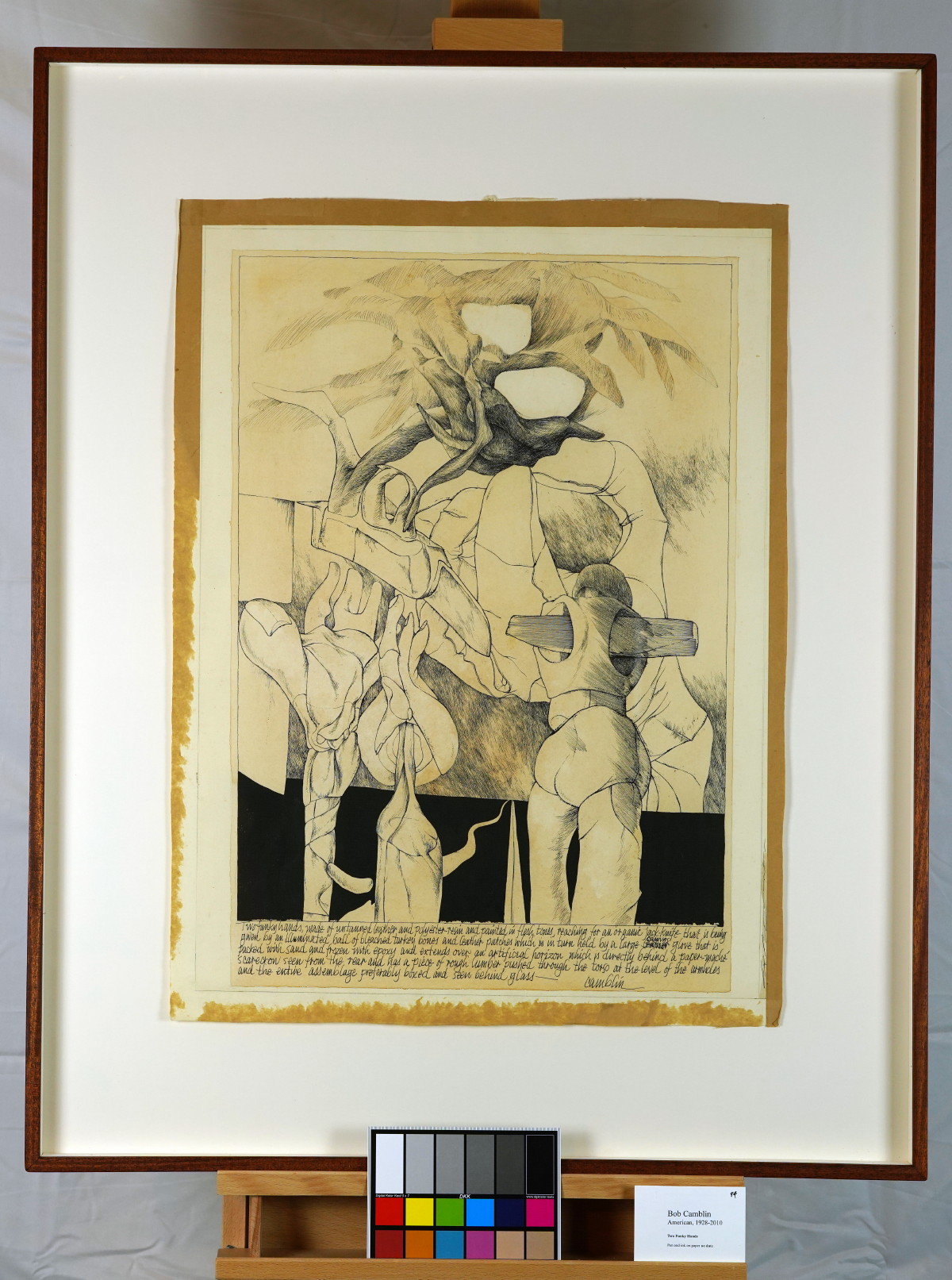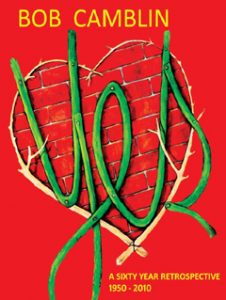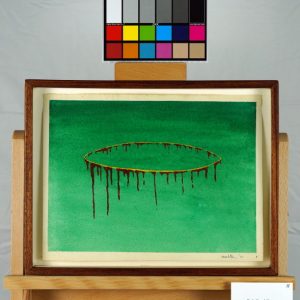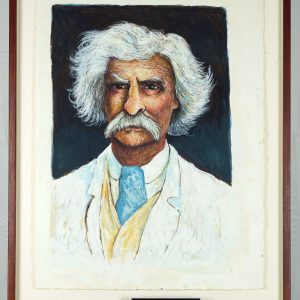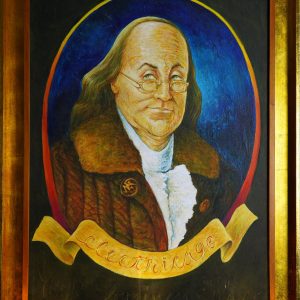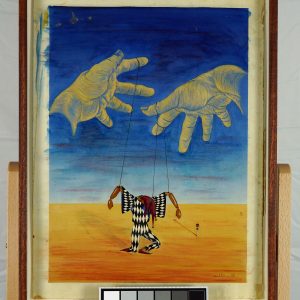Description
Two Funky Hands, no datePen and ink on paper
Signed
27 x 19 in. (image)
40.75 x 32.5 (frame)
original, includes certificate of authenticity from ArtTrust
The drawing “Two Funky Hands” features intricate linework depicting abstract organic forms and ambiguous shapes, which appear to merge into one another. The scene includes biomorphic figures that seem to have both human and animal qualities, creating a surreal and dreamlike composition. The use of a black-and-white palette emphasizes the contrast and depth within the piece, adding to its mysterious atmosphere. The figures seem to be engaged in some sort of interaction, suggesting themes of transformation or mutation.
From a Zen perspective, the artwork could be seen as an exploration of the illusion of separation between entities. The interconnected forms evoke the Zen idea that all beings and objects are part of a singular, undivided reality. The ambiguity in the figures represents the formlessness from which all things emerge and dissolve, inviting contemplation on the transient nature of life and identity.
In the context of the I Ching, the Hexagram “29. Kan / The Abysmal (Water)” might resonate with this piece. Kan is associated with danger and the need to navigate difficulties with inner strength and awareness. The entangled forms in the artwork could symbolize the complex challenges one encounters, while the fluidity of the composition aligns with the idea of moving through difficulties by remaining flexible and adaptable.
Combining the Zen and I Ching perspectives, the artwork reflects a meditation on the ever-changing nature of existence and the need for resilience amidst uncertainty. The merging figures represent the fluidity of life’s circumstances, where one’s identity and path are continuously shaped by experiences. The piece challenges viewers to embrace transformation and find harmony even in chaos.
This drawing aligns with the tradition of surrealist art, which often delves into the unconscious and explores the blending of dreamlike imagery with reality. The forms evoke the organic abstraction found in the works of artists like Hans Bellmer and Max Ernst, who similarly utilized surrealism to express psychological themes. The combination of biomorphic shapes and detailed linework situates this artwork within a lineage that questions conventional boundaries between the human, the animal, and the environment.
The piece encourages viewers to reflect on their perceptions of identity and reality, pushing the boundaries of figurative representation to explore the interconnectedness of all things.
*Shipping cost will vary, please inquire at sales@camblingallery.com before purchasing.
Currently ships from Oregon, USA
Member of artnet? Apply for a discount! Inquire about intergallery and permanent loans for museums.
“Two Funky Hands” was featured in his Yes Retrospective
Reproductions of this drawing are available in multiple sizes!
Click here to use our high-resolution viewer!
This artwork is available with a non-fungible token to ensure traceability and transparency of provenance.
The royalty factor – Unlike traditional artworks, such as paintings, mosaics, statues, and the like, NFTs can be programmed to provide royalties to you every time the painting (and token) is sold and resold – for eternity. That mind-bending Camblin you sold could be worth millions one day and provide income for your great-great-great grandkids!
Anti-forgery – The central idea underpinning NFTs is that they are built on the blockchain, which is meant to offer advanced security. Think of it like an un-erasable and un-avoidable copyright.
Easy authentication – Another compelling aspect of NFT art and NFTs in general is the ability to quickly and easily authenticate items, as the record of ownership is scrupulously kept on the blockchain.
